AICP Section 2.1.2 - Patterns of Human Settlement
1/11
There's no tags or description
Looks like no tags are added yet.
Name | Mastery | Learn | Test | Matching | Spaced |
|---|
No study sessions yet.
12 Terms
Growth and Development of Places Over Time
Historical evolution of communities, shaped by economic, social, and environmental factors, including the transition from rural to urban settings, the impact of industrialization, and the role of policies and planning in guiding sustainable growth. Understanding how communities change evolution helps planners address contemporary challenges and anticipate future trends.
Related: Streetcar Suburbs, Urban Patterns (Linear, Cluster), Central Place Theory, Urban Morphology (form, resolution, time), life-cycle model of land use change, Central Business District (CBD), Concentric Zones, Sector Theory (Hoyt), Multiple Nuclei, Dispersed City, Edge City (Garreau), Boomburbs (Lang), Redlining, Home Owners Loan Corporation (HOLC)
Concentric Zone Model
(Example)
A model that represents urban land use in a series of concentric circles, dividing the city into zones based on social class and economic status, including zones for the central business district, transition, zone of working-class homes, zone of better residencies, and commuter zone.
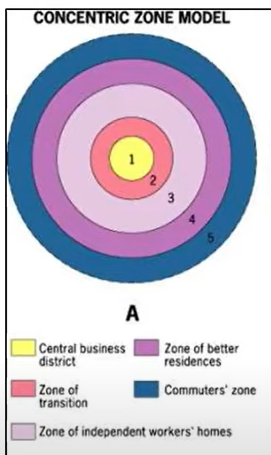
Sector Model
(Example)
A model of urban land use that divides the city into sectors or wedges radiating from the central business district. Emphasis on isolating industrial and transportation uses from higher-rent/class areas.
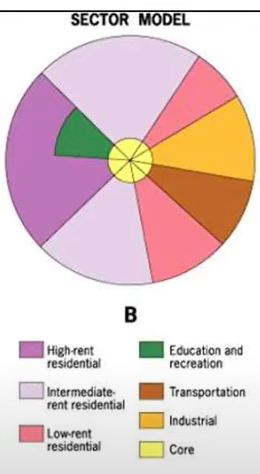
Multiple Nuclei Model
(Example)
A model of urban land use that suggests cities have multiple centers (nuclei) around which different activities cluster, rather than a single central business district. This model is most representative of post-war American urban development.
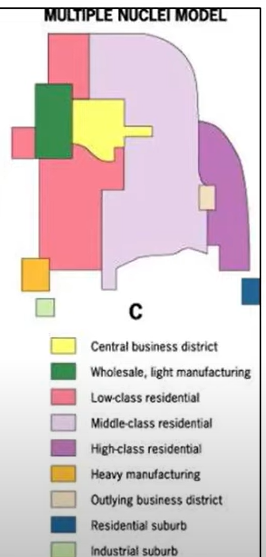
Central Place Theory
(Example)
Hierarchy of urban to semi-rural places wherein market areas interweave and lessen in intensity towards the outer rings.
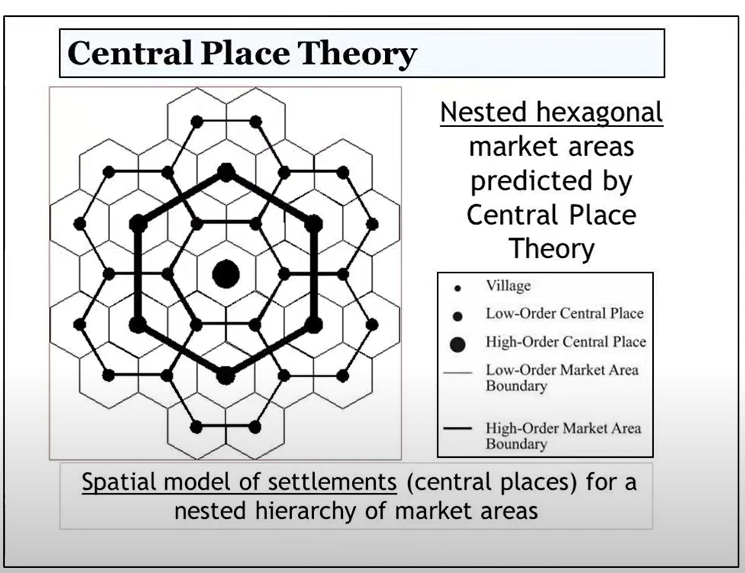
Role of Transportation
Transportation plays a critical role in shaping urban form and facilitating the movement of people and goods. Effective transportation systems enhance accessibility, promote economic development, and influence land use patterns.
Related: Walking-horsecar era (1800-1890), Electric Streetcar Era (1890-1920), Recreational Auto Era (1920-1945), Freeway Era (1945-Present), Streetcar Suburbs, US National Interstate and Defense Highway Acts (1956); Land Use, Transportation, Air Quality (LUTRAQ)
Role of Transportation in Urban Growth Patterns
(Example)
Transportation methods directly influence both the extent of urban development and the density of that development. Dense, downtown CBDs are often explained by their creation before the advent of the automobile, while curvilinear suburban development has been predominantly constructed following WW2 and during the Freeway Era.
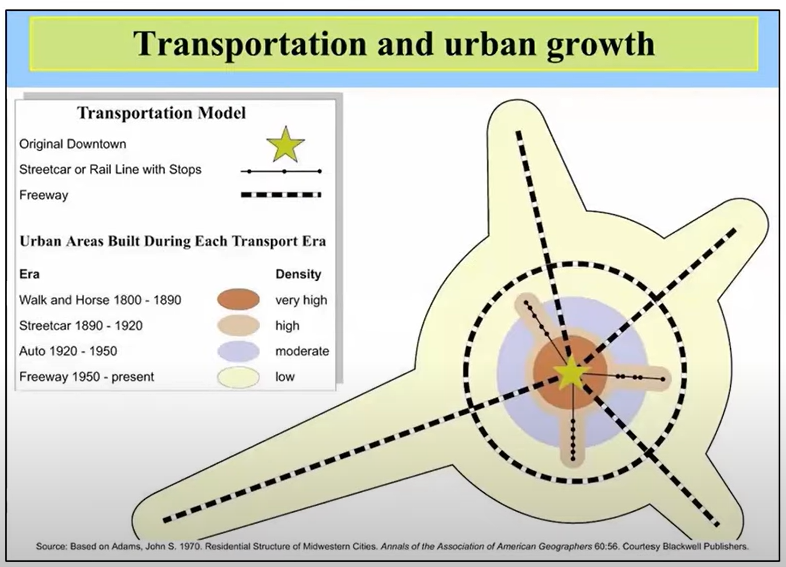
Climate
Climate and climate change impacts on community include coastal and low-lying inundation, severe health impacts from extreme heat and air quality deterioration, endangerment of life and property through extreme weather events, and other impacts that will have very negative consequences for many people, especially minority and lower-income communities.
Effects of Discrimination
Impacts of discrimination include social and racial inequity across all aspects of the community through current and historical actions. Redlining, mortgage discrimination, deeds restrictions, highway displacement, mobility discrimination, exclusionary zoning practices, and urban renewal and gentrification.
Cultural Influences
Cultural influences shape the identity and character of community. These influences include historical heritage, community values, social norms, and the presence of diverse populations. Planners must recognize and incorporate cultural elements to create inclusive and vibrant communities that reflect the unique characteristics of their inhabitants.
Related: Inclusive communities, population and diversity, immigration, enclaves, cultural resources, cultural site features, cultural facilities, historic preservation, cultural planning and policy, cultural districts
Location of places in shaping urban form
Location of places significantly impact the spatial organization and design of the community. Geography, proximity to resources, climate, and strategic positioning influence urban development patterns. Planners must consider these locational attributes to optimize land use, infrastructure development, and environmental sustainability.
Related: Spatial organization, urban geography, Central Place Theory